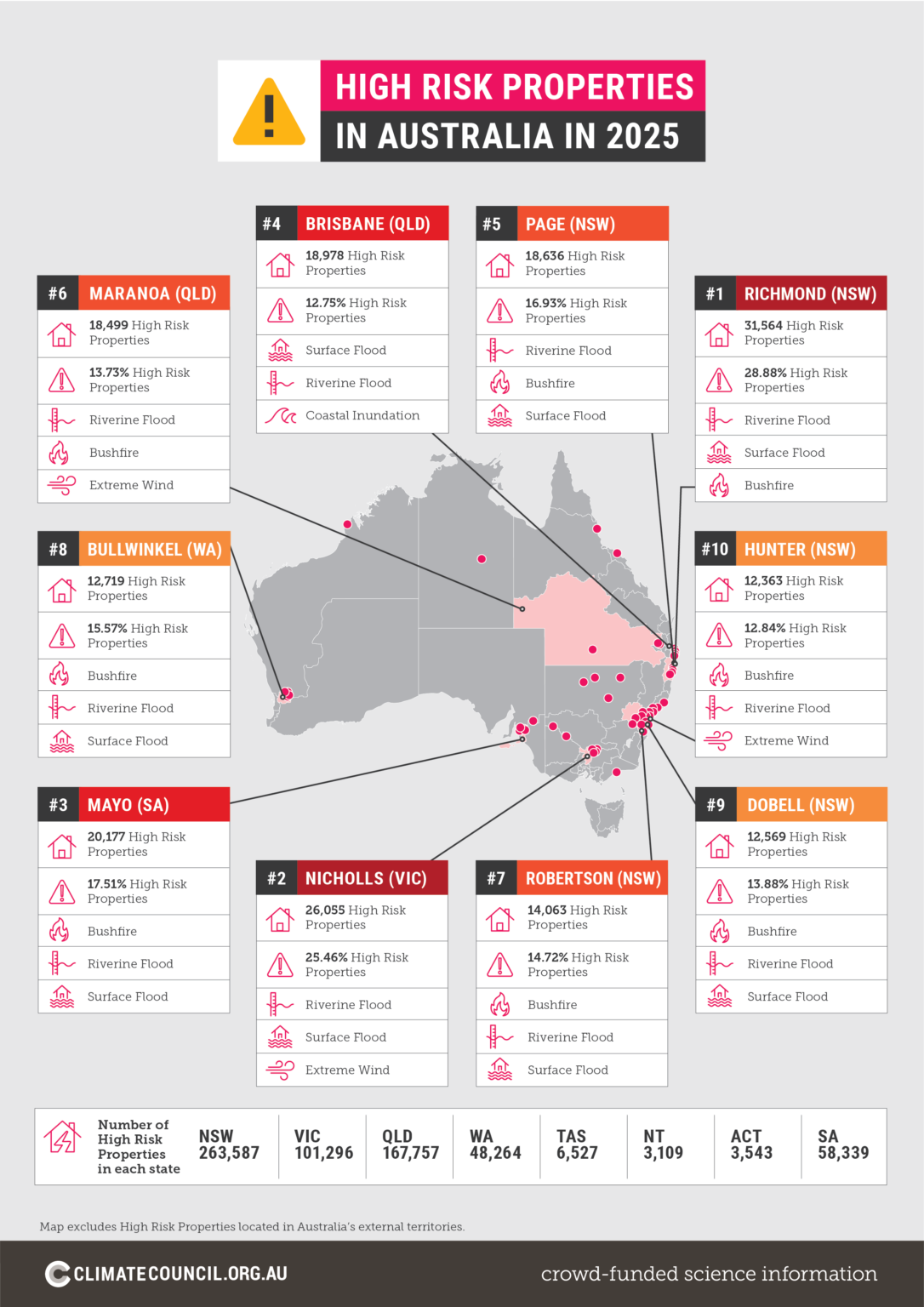

New national data underscores the growing exposure of Australian properties to climate-related hazards, prompting fresh appeals from the insurance sector for a comprehensive, long-term disaster resilience agenda.
An analysis conducted by Climate Valuation and The Climate Council revealed that approximately 652,000 residential and commercial properties – about 4.4% of the national property base – are already considered at high risk from climate-amplified events such as flooding, bushfires, severe wind, and coastal erosion.
A further 1.55 million properties (10.4%) are assessed as moderately at risk, where insurance premiums are likely to remain elevated.
The findings are based on data from more than 15 million properties across 150 federal electorates and over 15,000 suburbs. This dataset feeds into the Climate Risk Map, an interactive platform developed to visualise climate vulnerability at a hyper-local level.
Projections showed that under higher climate pollution scenarios, the number of high-risk properties could more than double by 2100.
Additionally, over 72,000 properties are situated in 86 suburbs now designated as “critical climate risk zones,” where most homes are categorised as high risk and insurance coverage may be priced out of reach or withdrawn altogether.

Nicki Hutley, an economist and Climate Councillor, said the data revealed the material risks climate volatility poses to asset values and financial systems.
“The climate crisis is literally at the doorstep of Australian households, as worsening extreme weather driven by climate pollution risks their greatest asset: the home,” she said. “We keep getting hit by disasters in Australia and that’s driving insurance bills through the roof, but we cannot insure our way out of this crisis.”
Karl Mallon, director of Climate Valuation, emphasised the need for targeted policy intervention.
“It is imperative that decision makers at all levels look seriously at the stark statistics presented here and work to address questions head-on: What adaptation action are all levels of government going to take now to protect our vulnerable communities?” Mallon said. “And how will this be financed?”
Greg Mullins, a Climate Councillor and former NSW fire chief, noted that risk zones are expanding beyond traditional boundaries.
“As the climate risk map and report makes distressingly clear, no home or business is now safe from the devastating consequences of burning fossil fuels,” he said. “Even if your electorate is in a low risk zone, it does not mean fires or floods won’t happen in your local area because climate change has rewritten the rules.”
As disaster risks worsen in the country, the Insurance Council of Australia (ICA) has reinforced its proposal for a national Flood Defence Fund.
While welcoming the federal government’s ongoing support for existing resilience initiatives in the 2025-26 Budget, the ICA highlighted the absence of new commitments for flood-specific risk mitigation.
Under the ICA’s plan, a proposed $30.15 billion fund would be jointly delivered by federal and state governments over 10 years.
